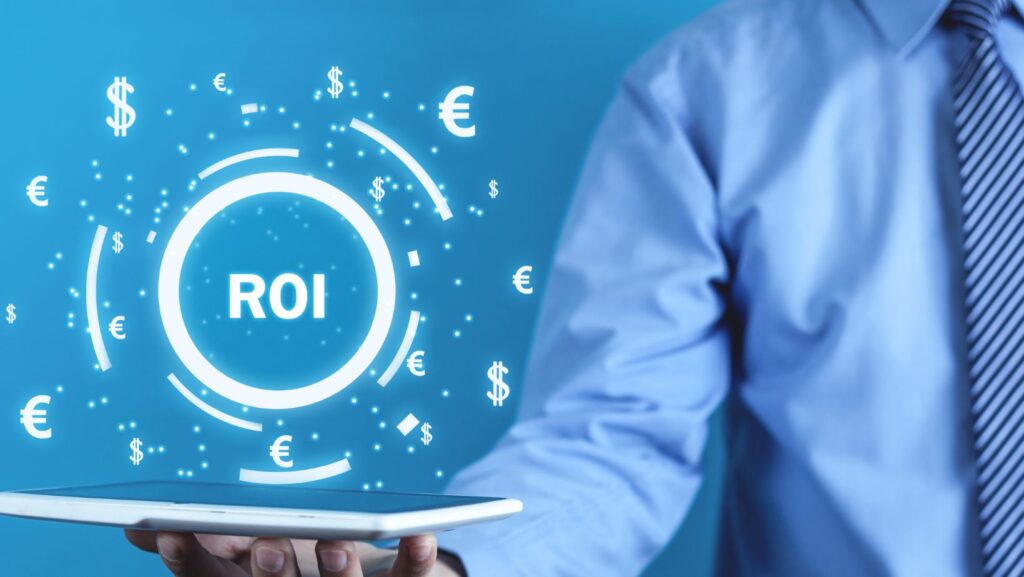When you’re looking at the numbers for the demand forecasting software, it’s not just about the software itself. You need to think about how better forecasts actually help the business day-to-day. Let’s begin by understanding how to measure the ROI of demand forecasting systems and explore what top solutions can deliver.
Key Metrics for Measuring Demand Forecasting Software ROI
Getting your forecasts more accurate can lead to some pretty significant savings and improvements across your operations, optimizing resource allocation and reducing waste. It’s about seeing the ripple effect of good data, where improved accuracy in one area positively influences many others, ultimately boosting your bottom line and operational efficiency
Inventory Carrying Costs Reduction
This is a big one. When your forecasts are more on the mark, you don’t need to keep as much safety stock sitting around. Less inventory means lower costs for storage, insurance, and the money tied up in that stock.
Consider the tangible benefits: if you consistently manage to carry 10% less inventory on average across your product lines, that represents a direct and measurable saving on the overall cost of holding that stock. This reduction not only improves your financial standing by freeing up valuable capital but also optimizes your warehouse space, making it available for more productive uses or reducing the need for expanded facilities. McKinsey reports that improving forecast accuracy by 10–20% can cut inventory costs by around 5%. For example, LEAFIO.AI showed a reduction in overstocking by 50%.
Reduced Stockouts and Lost Sales
Nobody likes telling a customer you’re out of something they want. More accurate demand forecasts mean you’re more likely to have the right products available when customers want them. This directly translates to fewer lost sales opportunities and happier customers who can actually buy what they came for. It’s a pretty straightforward link between better forecasting and increased revenue. Higher prediction accuracy in AI‑powered forecasting solutions, like LEAFIO.AI, can reduce lost sales by up to 70%.
Enhanced Marketing and Sales Effectiveness
Good demand forecasts give your marketing and sales teams better information to work with. They can plan promotions more strategically, knowing what products are likely to be in demand and when. Sales teams can focus their efforts on products that are projected to sell well, and marketing can tailor campaigns to match anticipated customer interest. It makes their efforts more targeted and less of a shot in the dark. Precision at forecast levels of over 70% elevates promotional ROI by nearly 30% in gross margins.
Decreased Expedited Shipping Costs
When unexpected demand spikes or stockouts happen because of poor forecasting, companies often resort to expensive expedited shipping to catch up. Better forecasting helps you avoid these last-minute rushes. By having the right inventory in the right place at the right time, you can cut down on those costly air freight or rush delivery charges, saving a noticeable amount on logistics expenses. McKinsey estimates AI in distribution can reduce logistics costs by 5–20%.
On the other hand, you’ve got to consider the full picture of what it actually costs to get it up and running and keep it that way. Thinking about these costs upfront helps you avoid surprises down the road and gives you a more realistic view of the investment.
Software Subscription and Licensing Fees
This is usually the most obvious cost. It’s the price you pay to use the software, whether that’s a monthly subscription or an upfront license fee. Keep in mind that pricing can sometimes change based on the number of users, the features you need, or the volume of data you’re processing. Always check what’s included – sometimes basic support is bundled in, but advanced features or higher data limits might cost extra.
Implementation and Integration Costs
Getting the software set up and connected to your existing systems (like your ERP or warehouse management system) isn’t always free. You might have one-time fees for the vendor to help with the setup, or you might need to hire consultants. Data migration and cleaning can also take a significant amount of time and resources.

If demand forecasting needs to be custom-integrated into an existing ERP and other systems, the cost of such integration can vary greatly depending on compatibility. Plugging forecasting tools into your ERP/WMS/other systems isn’t trivial. Expect integration, customization, and configuration fees in the ballpark of $3,500 to $40,000. Integration timelines can stretch from a few months up to a year, especially when factoring in planning, data migration, testing, and staff training.
This phase is critical for making sure the software actually works with your business processes. Don’t underestimate the time and effort needed here; it can often be more than people expect.
Training and Ongoing Support
Your team needs to know how to use the software effectively. This means budgeting for training sessions, whether they’re provided by the vendor or developed internally. Beyond the initial training, there are ongoing support costs. This could be for technical help when things go wrong, software updates, or even regular check-ins to ensure the system performs optimally. As part of this ongoing support, consider model retraining and data pipeline maintenance, as AI models can change over time and need attention.
Putting It All Together
So, when you look at the numbers, getting your demand forecasts right makes a big difference. It’s not just about having a slightly better guess for next month; it’s about cutting down on wasted money, making sure you have what customers want, and ultimately, boosting your profits. While figuring out the exact dollar amount can take some effort, focusing on things like less inventory sitting around, fewer emergency shipments, and not having to throw away unsold goods really adds up. Plus, when you get your stock levels right, you sell more. It might seem like a lot to take in, but the payoff for investing in better forecasting tools is definitely there, often showing results much faster than you might expect.
